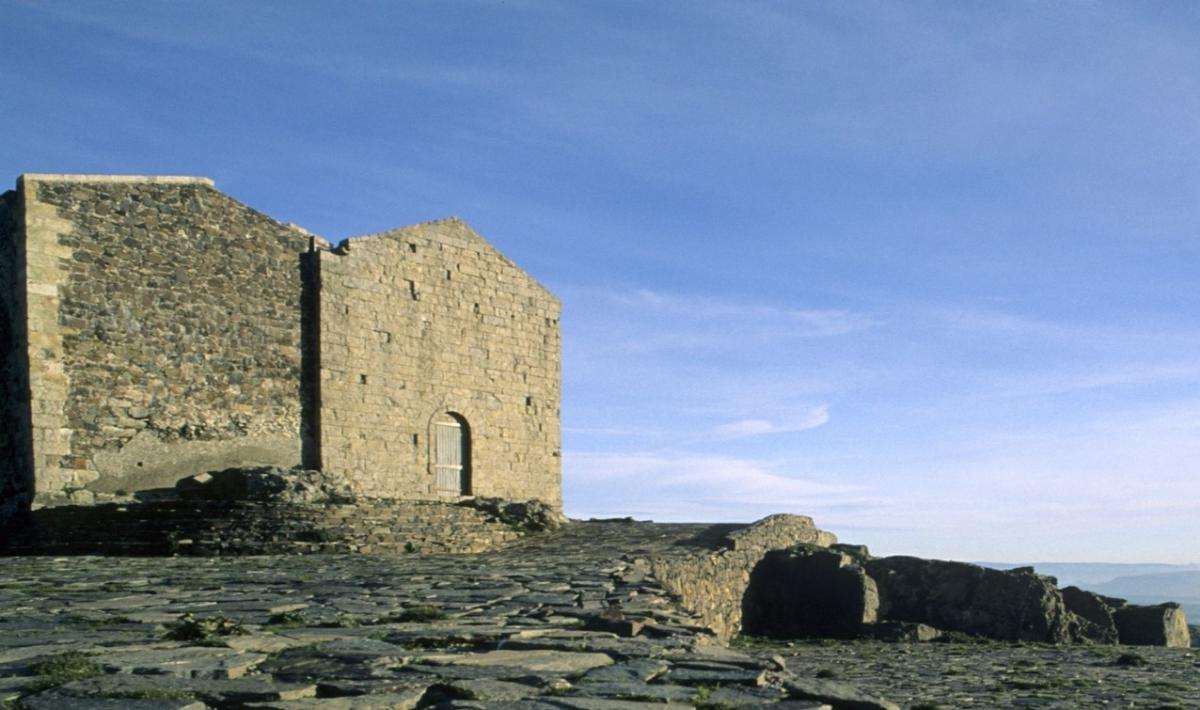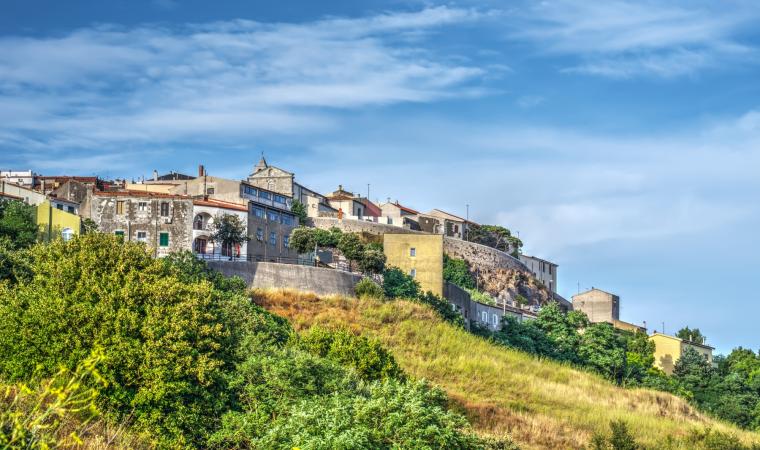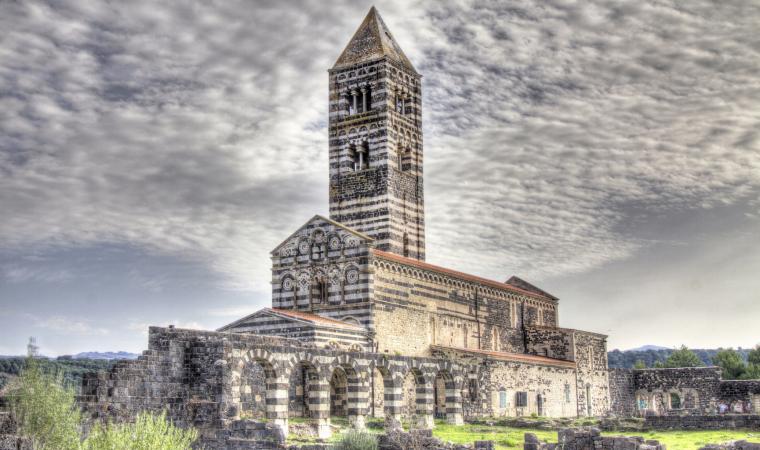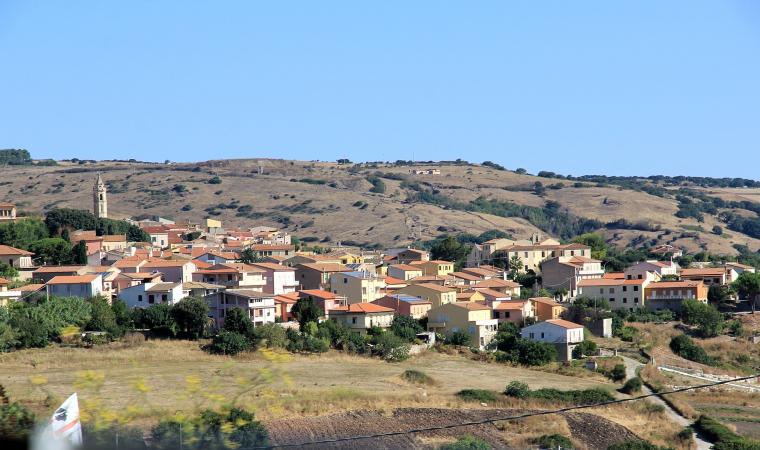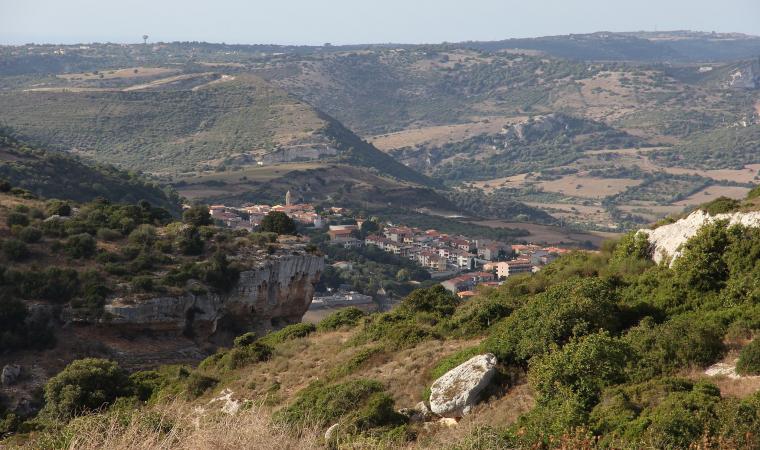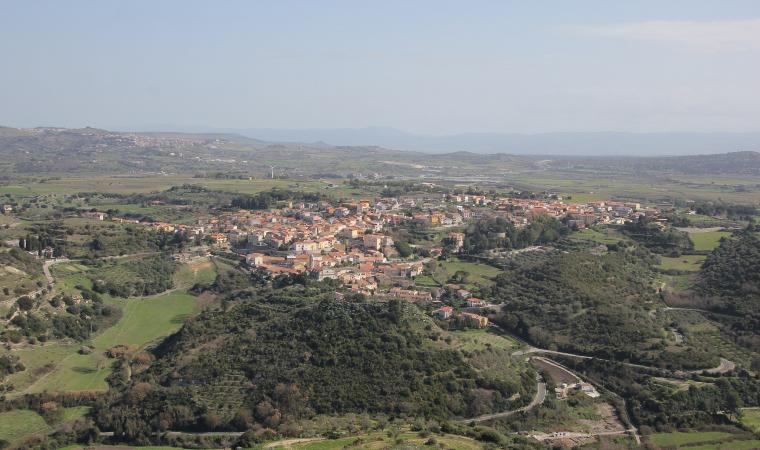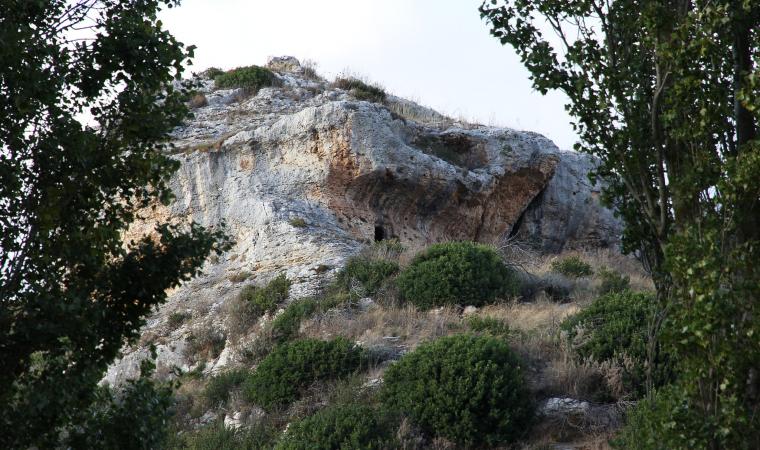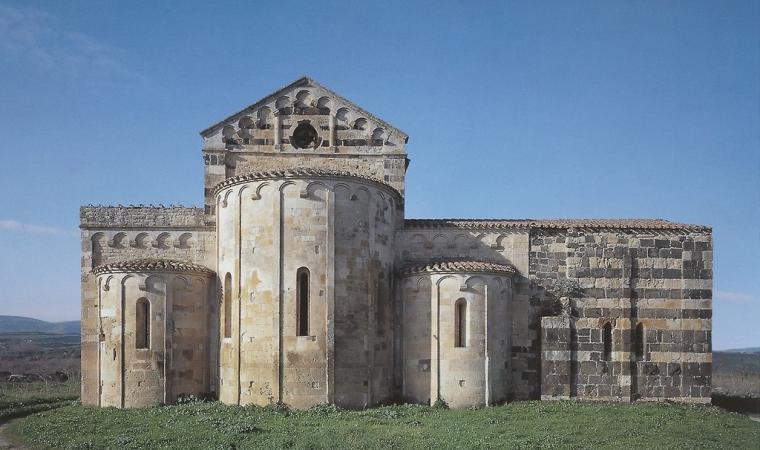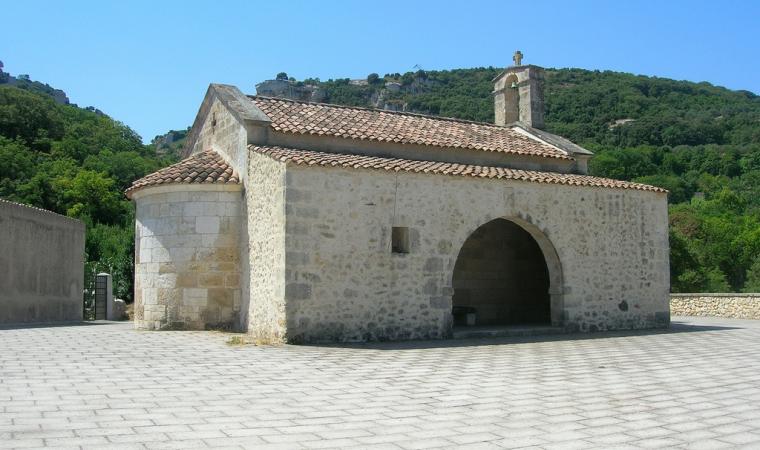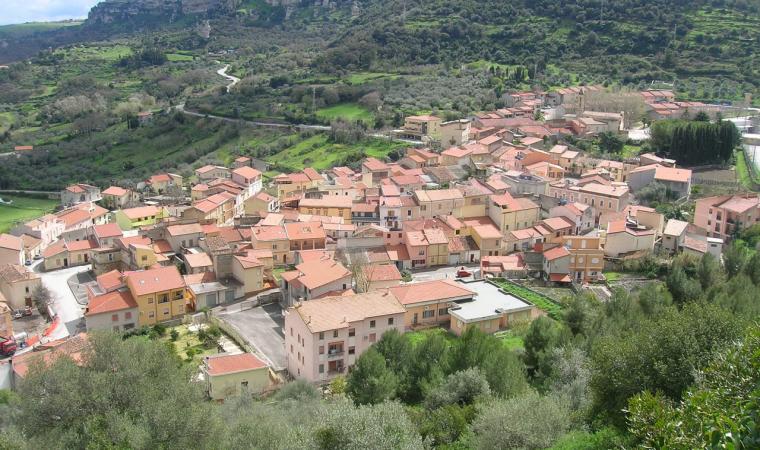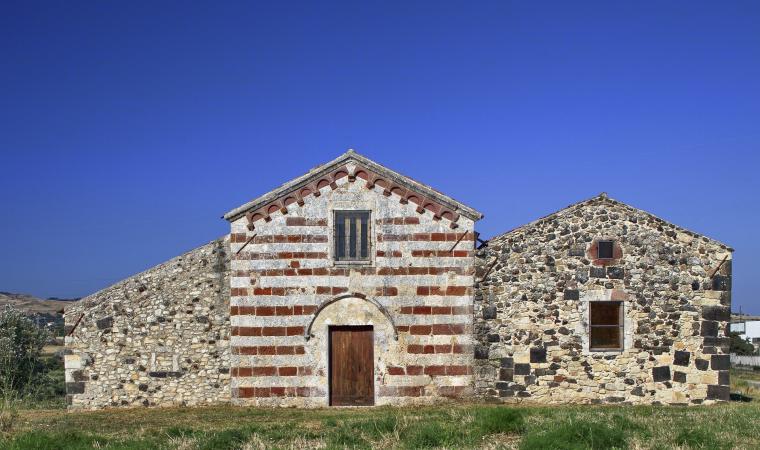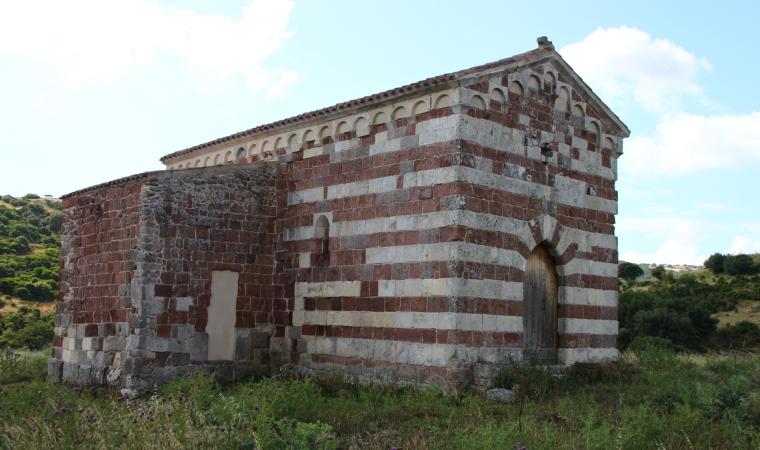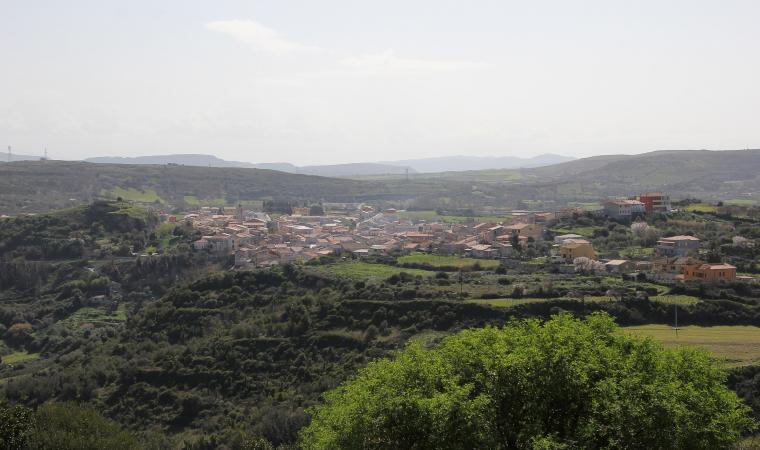It is the ‘highest’ church in the Sassari area and is the only Sardinian sanctuary dedicated to the protector of sailors built on a high ground, standing out against a spectacular landscape around it. Nostra Signora di Bonaria is located on the summit of one of the three peaks of Mount Tuffudesu, in the territory of Osilo, about three kilometres from the residential area. The current building dates back to the 17th century, although stories linked to the sanctuary tell us about a first stone laid in 1450, to thank the Madonna for having freed Osilo from a plague epidemic. The building is made of basalt and tuff ashlars and cannot be attributed to any particular architectural styles, apart from a few small concessions to the Baroque.
The church has a single nave and is barrel vaulted and divided into two bays by pilasters. There is a rectangular window on the right side. In the apse, which has a quadrangular floor plan, you will notice an unusual element: stone seats reserved for the choir, positioned on the sides of the altar. During its first phases of use, the sanctuary was regularly frequented but then went through a phase of total abandonment. Today it is the protagonist of a ritual that takes place every year on 15 August: from the Parish Church of Immacolata Concezione, worshippers set out in a procession, carrying the simulacrum of the Madonna di Bonaria, to place it in the niche behind the altar. In the evening of the same day, it’s time for the reverse route. The climb towards the hill takes place in its last stretch along a paved path and leads to the square, where your view will stretch for more than a hundred kilometres over the Gulf of Asinara and the Sassari area, up to Corsica on the clearest days. It is no coincidence that the church was used as a reference point in navigation, as it was visible from the sea thanks to its elevated position. Speaking of buildings on high ground, on the northern peak of Tuffudesu there is also the symbol of Osilo, at the foot of which the town developed: the Malaspina Castle. There are no certain sources that attest to the year of its construction, but it is thought to date back to the 12th century. Certainly during the following century, it was part of the possessions of the noble Malaspina family, who also boasted ownership of the Castle of Serravalle in Bosa. The building has an oval layout, surrounded by a mighty wall with two towers, one of which is circular and made of basalt and the other is square and made of tuff.
Other churches in Osilo are also worth a visit: in addition to the parish church, the Late-Renaissance Church of Nostra Signora del Rosario stands out. The Church of Santo Spirito stands in the northeastern outskirts of the village, while in the scenic ‘valley of the mills’, in the hamlet of San Lorenzo, you can visit the little church of the same name, already mentioned in 17th century sources and recently restored.

